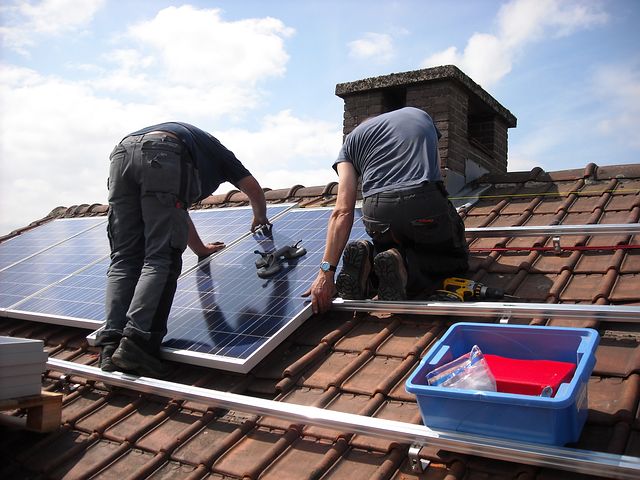What are solar panels?
At any given time, 173,000 terawatts of solar energy reach the Earth. This is 10,000 times the total energy needs of the world! The sun works as a nuclear reactor and releases tiny packets of energy called photons. These photons take 8.5 minutes to reach the Earth and through photovoltaic cells, their energy can be harnessed to power our planet.
When photons hit the solar cells, the electrons are separated and turned loose. The conductor provides a channel for the electrons to travel from positive to negative sides. This generates an electric current. Putting multiple cells together creates a solar panel. Multiple panels are put together to generate the desired energy.
The photovoltaic, solar cells are made of silicon, which is a semiconductor. These panels generate Direct Current (DC) electricity which is converted to Alternating Current (AC) through generators. These generators further power electrical devices.
Is solar energy cost-effective?

According to the International Energy Agency’s World Energy Outlook 2020, solar energy is cheaper today than was expected previously. Most solar energy systems are good for 20 years or more and do not require much maintenance. Thus, most cost-effective solar panel financing is upfront during the installation and purchase stage.
Since solar panels create their own power, they can offset the monthly bill of your residence. If your system has enough capacity, you can sell the residue energy to the grid and get paid instead! However, the amount of energy you would generate depends on the sun exposure your residential area has. The number of days and the amount of time your house gets sun exposure, and the angle at which the panel is installed matter a lot. The amount of energy you use in your house also determines what capacity you need in your solar system.
Typically, including installation cost, a solar system can cost on average $3,000 and $10,000. On average, a typical home uses 20kWh of energy a day. For such a home, a 5kW solar system would meet most of the daytime power needs.
3kW: $3,500 – $5,000
5kW: $4,500 – $8,000
6.6kW: $5,000 – $9,000
10kW: $8,000 – $12,000
This cost includes government subsidies and tax credits granted to encourage solar energy.
How can you finance solar panels for your home?
The government provides special incentives and subsidies to encourage homeowners to go solar. Small-scale Technology Certificates, a federal government subsidy for solar panels, are available to all Australian households and small businesses. The amount of this subsidy varies by region, but on average, it lowers the upfront cost of solar power systems by 30%. It’s one of the most cost-effective solar incentives available. On state level, WA, Queensland, Tasmania or the Northern Territory currently offer no solar subsidies.
Households in all Australian states are compensated by their electricity retailer for any excess solar power produced by their system and exported to the grid. This is known as a feed-in tariff, and it appears on the energy bill as a credit. The feed-in tariff’s value varies from state to state and from electricity retailer to electricity retailer. It is suggested that you shop around for your electric needs to find a supplier that meets your requirements the best.
Depending on the size of the system and its position, a new solar PV system can produce a certain number of STCs. The larger the device and the sunnier the area in which it is located, the more STCs it will produce. A 6kW system in Sydney, for example, will produce 99 STCs.
The government offers other incentives such as property tax exemption, cashback schemes, and expedited permits to encourage solar panel financing by residents. Since solar energy is becoming cheaper by the day, this is the golden time to make use of the incentives scheme before it is waived.
If you are looking to go solar, it is best to make use of the financial schemes and tax credits made available by your government.